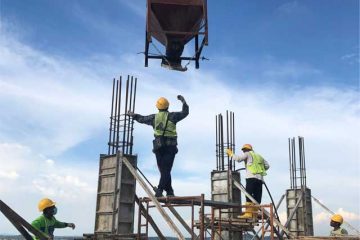First Aid Requirements
The following is a guidance for first aid requirements in the workplace under the Work Health and Safety Act and Regulations. It includes information on first aiders, first aid facilities and first aid kits.
Safe Work Australia publish Code of Practice for First Aid in the Workplace which much of the following summarises.
First Aid is the immediate care given after training and completing required competencies to recognise and respond to common life threatening injuries or illnesses. It includes life support using CPR (cardiopulmonary resuscitation) and managing the casualty until medical or other professional assistance arrives.
First Aiders
First Aiders should have a nationally recognised Statement of Attainment issued by a Registered Training Organisation.
Low risk workplace first aiders should be competently trained to perform CPR and treat minor illnesses and injuries is adequate.
High risk workplaces first aiders can receive training to Apply Advanced First Aid which provides additional competences more suitable for high risk needs.
Managing first aid in the workplace (Occupational First Aid) provides competencies required to apply advanced first aid procedures and manage a first aid room.
First aiders should attend training on a regular basis to refresh their first aid knowledge and skills. Refresher training in CPR should be undertaken annually and first aid qualifications should be renewed every three years.
First aiders should take standard precautions to avoid becoming ill and exposing others to illness when handling blood or body substances.
The following ratios are recommended for the number of trained first aiders:
- low risk workplaces – one first aider for every 50 workers
- high risk workplaces – one first aider for every 25 workers
Documentation
Develop first aid procedures and implement to ensure that workers have a clear understanding of first aid in their workplace.
A record of any first aid treatment given should be made by the first aider and reported to a manager on a regular basis to assist reviewing first aid arrangements. First aid treatment records are subject to requirements under Health Records legislation.
A person conducting a business or undertaking must prepare an emergency plan for the workplace that provides procedures to respond effectively in an emergency.
Communication
You must provide information about first aid to your workers so that they know what to do and who to contact if they are sick or injured. Information should be easy to understand, accessible and should take into account the language and literacy levels of your workers.
You should regularly review your first aid arrangements in consultation with your workers to ensure they remain adequate and effective. Risk Management Process:
- Step 1 – Identify potential causes of workplace injury and illness
- Step 2 – Assess the risk of workplace injury and illness
- Step 3 – What first aid is required?
- Step 4 – Review first aid to ensure effectiveness
Basic First Aid Kits
You should provide and maintain First Aid kits. First aid kits should be kept in a prominent, reachable location and be able to be retrieved quickly. They should also be located in areas that have a higher risk of injury or illness. A workplace with several levels should have at least one kit on every second floor. The location of the kits should be identified on Emergency Floor plans. The contents of kits should be able to provide basic first aid and equipment for:
Cuts, scratches, punctures, grazes and splinters, muscular sprains and strains, minor burns, amputations and/or major bleeding wounds, Broken bones, eye injuries and shock
First aid kits can be in a range of sizes, shapes and the contents can differ to suit your workplace, the basic first aid kit items are:
Adhesive tape and strips, cleaning agent, antiseptic, crepe bandages, current first aid textbook, disposal splinter remover, face shield or mask, gloves, plastic bags, safety pins, scissors, emergency rescue blanket, sterile eye pad, sterile saline, triangular bandages, tweezers/forceps and wound dressing materials
High Risk First Aid Kits
Additional supplies may be needed for high risks identified by a risk assessment such as serious burns, remote areas, animal bites, etc. Providing an Automatic Defibrillators can reduce risk of fatality from cardiac arrest and a useful addition for workplaces where there is a risk of electrocution. They should be clearly visible and signed, accessible and maintained to the manufacturer’s specifications. Eyewash equipment should be provided where there is a risk of hazardous chemicals or infectious substances causing eye injuries.
The kits should be:
- large enough to contain all necessary items
- be identifiable with a white cross on a green background
- contain a list of contents in the kit
- be made of material to protect the contents from dust, moisture, contamination and degradation.
Contents need to be in good working order and have sufficient stock to ensure you have what you need in an emergency. Remove and replace any expired stock.
First Aid Facilities
Establish a first aid room at the workplace if a risk assessment indicates that it would be difficult to administer appropriate first aid without one.
The Code of Practice recommends a first aid room for:
- low risk workplaces with 200 workers or more
- high risk workplaces with 100 workers or more
The contents of a first aid room should suit the hazards that are specific to the workplace. The location and size of the room should allow easy access and movement of people with injuries who may need support, a wheelchair or put on a stretcher.



2 Comments
admin · August 26, 2016 at 3:38 am
Please note the linked URL you have on your https://eegbusiness.wordpress.com/2015/03/13/questions-and-answers-march-12/ website has changed to https://www.kbis.com.au/first-aid-requirements/
Questions and Answers – March 12 | eegbusiness · March 13, 2015 at 12:01 am
[…] First Aid Requirements – Rob Kellock Business Consulting […]
Comments are closed.